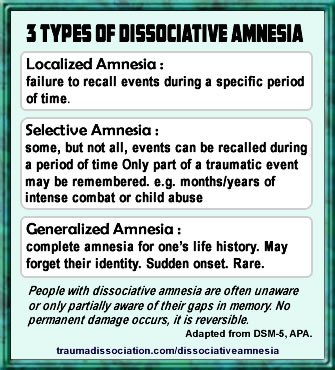Life with autism can present a multitude of challenges, but one thing that remains constant is the unwavering loyalty and love of our furry friends. Dogs have long been credited for their ability to provide comfort and companionship, but did you know that with the right training, they can also lend a helping paw during autism meltdowns? Imagine having a four-legged ally who can intuitively sense distress, diffuse tension, and offer a soothing presence in those overwhelming moments. In this article, we will delve into the world of training dogs for autism meltdown assistance, equipping you with the knowledge and tools to empower both you and your loyal companion in navigating the beautiful yet complex journey of autism.
Table of Contents
- Understanding Autism Meltdowns: What You Need to Know
- Identifying Triggers: Unraveling the Root Causes of Meltdowns
- Building a Calm and Safe Environment for Effective Training
- Training Techniques: Developing Specific Skills for Autism Meltdown Assistance
- Continued Support: Nurturing the Bond with Your Assistance Dog
- Q&A
- Future Outlook

Understanding Autism Meltdowns: What You Need to Know
When it comes to understanding autism meltdowns, it’s important to remember that each individual experience is unique. Autism meltdowns are intense emotional reactions triggered by overwhelming situations or stimuli. These meltdowns can be challenging for both the individual with autism and those around them. It’s essential to approach these episodes with empathy and understanding.
Here are some key points to keep in mind when it comes to autism meltdowns:
- Meltdowns are not tantrums: It’s important to differentiate between meltdowns and tantrums. While tantrums are manipulative and goal-oriented, meltdowns are involuntary reactions caused by sensory overload or extreme emotions. Recognizing the difference can help avoid misunderstandings and provide appropriate support.
- Anticipation and prevention: Understanding potential triggers and taking preemptive steps can help prevent or minimize meltdowns. Creating a structured and predictable environment, using visual aids, and providing sensory breaks can offer much-needed support to individuals with autism.
- Support and patience: In the midst of a meltdown, offering support and maintaining a calm environment is crucial. Avoid overstimulation, provide reassurance, and allow the individual to self-regulate when possible. Patience and understanding can go a long way in helping someone navigate through a meltdown.
Understanding autism meltdowns requires compassion and knowledge. By educating ourselves and promoting acceptance, we can create a more inclusive and supportive society for individuals on the autism spectrum.

Identifying Triggers: Unraveling the Root Causes of Meltdowns
Peeling Back the Layers: Uncovering the Hidden Triggers Behind Meltdowns
Just like a complex puzzle, understanding the root causes of meltdowns requires some investigation. To navigate these turbulent waters, it’s crucial to identify the triggers that set off an individual, ultimately leading to a meltdown. By delving deep into the underlying factors, we gain the ability to offer support, empathy, and potentially prevent further distress.
Unmasking the Culprits: Common Triggers Behind Meltdowns
Let’s unravel the tangled web of triggers that often contribute to meltdowns:
- Overstimulation: Sensory overload can overwhelm individuals with sensory sensitivities, leading to meltdowns. Common triggers include loud noises, bright lights, strong smells, or crowded spaces.
- Transitions: Sudden changes in routines or unexpected transitions can be highly distressing, amplifying anxiety and triggering meltdowns. Offering predictability and visual schedules can help individuals navigate these challenges.
- Communication difficulties: Difficulty expressing oneself or understanding others can create frustration and stress. Feeling misunderstood or struggling to communicate needs often leads to personal distress and potential meltdowns.
- Emotional challenges: Strong emotions, such as anger, anxiety, or sadness, can overwhelm individuals and contribute to meltdowns. Helping them develop healthy emotional regulation strategies is essential for managing these triggers.
- Sensory discomfort: Sensory sensitivities can extend beyond overstimulation and include aversions to certain textures, tastes, or clothing. These discomforts can accumulate and ultimately provoke meltdowns.
Empathy and Support: Nurturing a Meltdown-Free Environment
By identifying these triggers, we can cultivate an environment of understanding and empathy. Utilizing strategies tailored to each individual’s needs, we can effectively minimize meltdowns and establish a supportive atmosphere:
- Accommodations: Making accommodations that cater to sensory needs, such as offering noise-canceling headphones or creating quiet spaces, can provide much-needed relief.
- Visual supports: Utilizing visual schedules, social stories, or visual cues can enhance predictability and enable smoother transitions.
- Open communication: Encouraging open dialogue, active listening, and fostering alternative forms of expression can facilitate clear communication and reduce frustration.
- Emotional well-being: Supporting individuals in developing coping strategies and teaching emotional regulation techniques helps to manage overwhelming emotions, minimizing the risk of meltdowns.
- Creating a calm environment: Promoting serenity through dimmed lighting, soothing colors, and a clutter-free space aids in reducing sensory discomfort and creating a peaceful atmosphere.
With a better grasp of the triggers behind meltdowns and armed with practical strategies, we can unravel the intricate web of causes, replacing distress with support, understanding, and improved well-being.

Building a Calm and Safe Environment for Effective Training
Creating a calm and safe environment is crucial for effective training sessions. By fostering an atmosphere of tranquility and security, participants are more likely to be engaged and receptive to the training content. Here are some key strategies to build such an environment:
- Ensure physical safety: Prioritize the safety of participants by conducting regular safety checks, identifying potential hazards, and maintaining a clean and organized training area. This includes providing clear emergency evacuation routes and having first aid equipment readily available.
- Encourage open communication: Foster an atmosphere where individuals feel comfortable expressing their thoughts, ideas, and concerns. Actively listen to participants and encourage their active involvement in discussions and activities. This creates a sense of psychological safety, allowing for a more productive and enriching training experience.
- Integrate relaxation techniques: Incorporate relaxation exercises, such as deep breathing or guided meditation, into the training sessions. These techniques help reduce stress and promote a calm state of mind, allowing participants to focus and retain information more effectively.
- Respect diversity and inclusivity: Embrace and celebrate the diversity of participants. Encourage inclusive language, respect different perspectives, and ensure everyone feels valued and included throughout the training process.
Remember, building a calm and safe environment is an ongoing effort that requires continuous attention and adaptation. By implementing these strategies, you can cultivate a training environment that optimizes participants’ learning and growth.

Training Techniques: Developing Specific Skills for Autism Meltdown Assistance
In order to effectively assist individuals with autism during meltdowns, it is crucial to develop specific skills that cater to their unique needs. These techniques can empower both the individuals themselves and their caregivers, enabling them to navigate these challenging situations with understanding and support.
1. Building Emotional Regulation:
Teaching individuals with autism how to regulate their emotions is a cornerstone skill in meltdown assistance. This can be achieved through various methods such as:
- Implementing deep breathing exercises to promote relaxation during heightened moments.
- Introducing visual aids like emotion charts or social stories to help them identify and express their emotions effectively.
- Encouraging the use of sensory tools, like stress balls or fidget spinners, to provide a positive outlet for their emotions.
2. Effective Communication Strategies:
Communication plays a vital role in meltdown assistance. Equipping individuals with autism with strong communication skills can have a profound impact on their ability to express their needs and diffuse meltdown triggers. Consider implementing the following techniques:
- Teaching individuals how to use alternative communication methods, such as visual schedules, PECS (Picture Exchange Communication System), or AAC (Augmentative and Alternative Communication) devices.
- Encouraging the use of calming phrases or gestures that individuals can communicate to those around them, indicating their need for assistance or a break.
- Practicing active listening techniques, allowing individuals to feel validated and understood when they express their emotions or frustrations.
3. Sensory Integration:
Sensory sensitivity often contributes to meltdowns in individuals with autism. Incorporating sensory integration techniques into training can help individuals better regulate their sensory experiences. Consider the following:
- Creating sensory-friendly environments by adjusting lighting, noise levels, and providing items like weighted blankets or noise-canceling headphones.
- Engaging individuals in sensory activities like deep pressure massages, joint compressions, or using sensory bins filled with tactile materials.
- Collaborating with occupational therapists to create personalized sensory diets based on individual preferences and needs.
By focusing on these training techniques and developing specific skills for autism meltdown assistance, individuals with autism can learn how to cope with meltdowns more effectively, and their support systems can provide the necessary understanding and support during these challenging situations.
Continued Support: Nurturing the Bond with Your Assistance Dog
Your assistance dog is not only your loving companion but also your lifeline to independence. To ensure that the bond between you and your furry hero continues to flourish, consistent support and nurturing are key. Here are a few tips to help strengthen and maintain the special connection you share:
- Regular Training Sessions: Even though your assistance dog has already completed extensive training, regular training sessions are essential to reinforce commands and skills. Spend dedicated time each day to practice tasks that your dog has been trained for, as well as introduce new commands to challenge their intelligence and keep their mind sharp.
- Maintain a Structured Routine: Dogs thrive on routine, and your assistance dog is no different. Establishing a consistent daily routine helps your dog feel secure, confident, and in sync with your needs. From feeding times to exercise and play, maintaining a structured routine will help create a predictable environment that your dog can rely on.
- Physical and Mental Stimulation: Keeping your assistance dog physically and mentally stimulated is vital for their overall well-being. Engage in regular exercise such as walks, playtime, or even interactive puzzle toys that challenge their problem-solving skills. This not only strengthens their bond with you but also ensures that they remain focused and attentive to their tasks.
Remember, the bond between you and your assistance dog is a lifelong journey. By providing continued support, training, and regular engagement, you are not only nurturing your incredible partnership but also enriching both of your lives together.
Q&A
How can training a dog help during an autism meltdown?
Training a dog to assist during an autism meltdown can provide comfort and support to individuals who experience sensory overload or emotional distress. Dogs can be taught to recognize signs of a meltdown and offer calming interventions through deep pressure therapy or simply by being a comforting presence.
What are some key skills that a meltdown assistance dog should be trained in?
Meltdown assistance dogs should be trained to recognize and respond to specific behaviors that indicate an impending meltdown. They should also learn to provide deep pressure therapy, act as a buffer between the individual and others, and assist in guiding the person to a safe and quiet space.
How can I start training a dog to assist during autism meltdowns?
To begin training a dog for meltdown assistance, it is recommended to consult with a professional dog trainer who specializes in assistance work. They can guide you through the process of identifying an appropriate dog, developing a training plan, and teaching the necessary skills for meltdown assistance.
What are some practical tasks a meltdown assistance dog can perform?
Apart from offering emotional support, meltdown assistance dogs can be trained to retrieve medication, provide deep pressure therapy through cuddling or leaning against the individual, interrupt self-harming behavior, and seek help from a caregiver during a meltdown.
Can any breed be trained as a meltdown assistance dog?
While there is no specific breed requirement for a meltdown assistance dog, certain breeds tend to excel in this role due to their temperament and trainability. Breeds like Golden Retrievers, Labrador Retrievers, and Standard Poodles often make excellent choices for training as meltdown assistance dogs.
How long does it typically take to train a dog for meltdown assistance?
The timeline for training a meltdown assistance dog can vary depending on the individual dog and their aptitude for learning. Generally, it can take anywhere from several months to a year or more to fully train a dog to provide meltdown assistance reliably.
Can a family pet be trained to assist during autism meltdowns?
If a family pet shows the aptitude and temperament for training, they can potentially be trained to assist during autism meltdowns. However, it is important to consult with a professional trainer who can assess the dog’s suitability for this specific type of assistance work.
Future Outlook
As we conclude this journey into the realm of training dogs for autism meltdown assistance, we hope you have discovered not only the immense potential these furry companions possess but also the profound impact they can have on individuals with autism spectrum disorder (ASD). Through their unconditional love, unwavering loyalty, and intuitive nature, these four-legged heroes have the power to transform lives, offering comfort, security, and a lifeline during moments of overwhelming distress.
Indeed, the process of training a dog for autism meltdown assistance requires dedication, patience, and a true partnership between the human and canine counterpart. From laying the foundation with basic obedience skills to delving into specialized tasks tailored to each individual’s unique needs, the road may be challenging at times, but the rewards are immeasurable.
Remember, however, that every journey is as unique as the bond created between a handler and their faithful companion. It is essential to approach training with an open mind, embracing flexibility and adaptability, as every dog and individual with ASD offers their own set of strengths and challenges. It is through empathy and understanding that we forge the strongest connections, allowing both dog and handler to grow together symbiotically.
Though we have covered an array of techniques and skills throughout this article, it is crucial to keep in mind that training should not be confined to the pages of a manual. Seek professional guidance, consult experts in the field, and remember that consistency and reinforcement are key. Listening to your dog’s cues, observing their behavior, and adjusting your training methods accordingly will ensure a fruitful and successful journey.
Finally, it is our hope that the knowledge and insights gleaned from this article will contribute to a greater understanding and acceptance of the invaluable role trained dogs can play in supporting individuals with autism during times of meltdown. Let us continue to champion these exceptional creatures, their handlers, and the transformative impact they have on the lives they touch.
So, as you embark on your own training expedition, may the bonds formed with your loyal furry companion bring you endless moments of joy, solace, and protection. May you revel in the incredible capacity dogs have to calm and soothe even the stormiest of meltdowns, offering a beacon of hope and a steadfast presence in the face of adversity. Embrace the journey, savor the victories, and let the amazing transformation begin.
As an affiliate, my content may feature links to products I personally use and recommend. By taking action, like subscribing or making a purchase, you’ll be supporting my work and fueling my taco cravings at the same time. Win-win, right?
Want to read more? Check out our Affiliate Disclosure page.